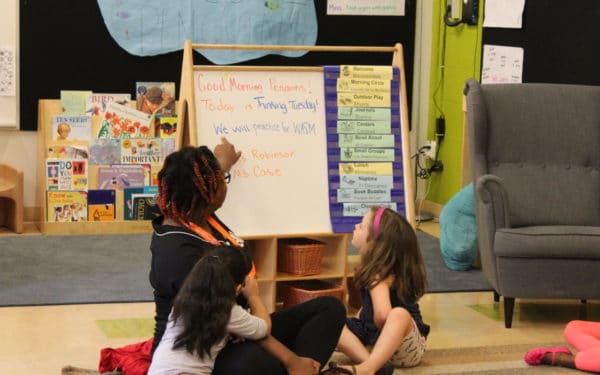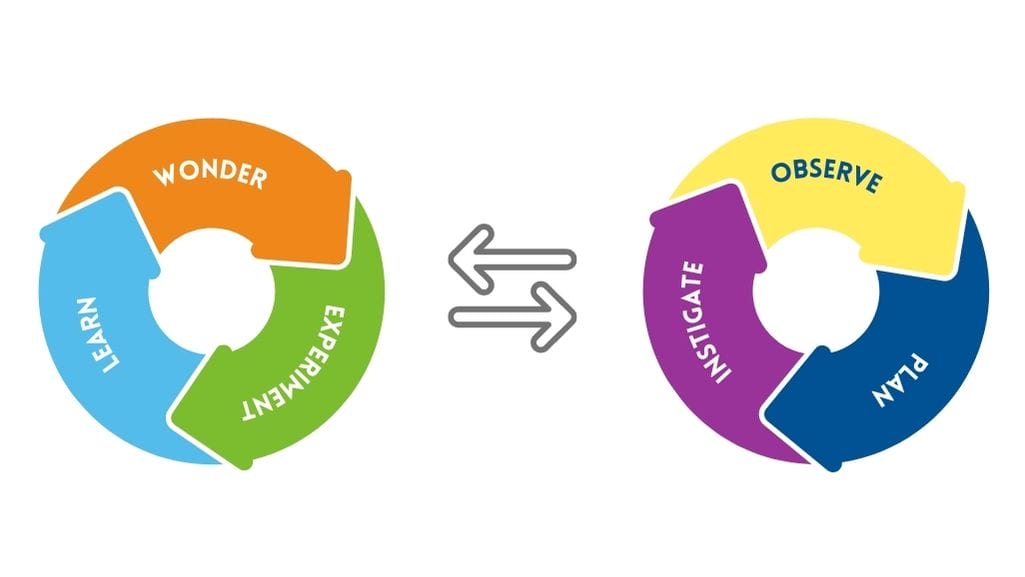October 18, 2021
By Aleta Margolis, Founder and President, Center for Inspired Teaching
Hooray for Monday is a weekly blog filled with questions, ideas, reflections, and actions we can all take to remodel the school experience for students.

Last week I was taking a virtual dance class with my beloved teacher Helen Hayes. The choreography she taught us was particularly challenging and the dance required a good deal of physical strength.
At the end of class, when we gathered at our screens to say thank you and goodbye, Helen told us, “If you feel winded at the end of this combination, that’s appropriate, given the level of challenge.” She smiled at me as I huffed and puffed, and we both acknowledged I was winded to at least an appropriate extent! I joked, “I’m glad to hear it’s appropriate to be winded tonight. I’m winded after every class, whether it’s appropriate or not!”
Helen responded, seriously but kindly pointing out that I could work on that. I could identify places in each class’ choreography where the movement demands less effort and requires less oxygen. And I could find rest in those places to conserve my energy for the places that demand more effort and require more oxygen. She pointed out that dancers who dance hours-long concerts know this deeply. They understand how much exertion each part of a dance requires, and know how to spend and conserve their energy accordingly. They have stamina.

This explanation of stamina extends far beyond dancing. And it got me thinking: In our busy days of teaching and learning (and everything else we do simultaneously), where are the moments in which we can conserve energy?
Relaxing into the moments that require less or lighter energy, and the moments in which we can actually refuel, allows us to revel in those moments that demand our full energy, just as dancers must relax into a plié and bend their knees in order to prepare for a leap.
Stamina is not the ability to operate at 100% effort 100% of the time. That’s over-exertion – and it leads to burnout. Stamina is the ability to know when to conserve energy, when to refuel, and when to expend energy. Refueling happens in obvious places (i.e. while sleeping); however, if we want to develop stamina, we also need to find more subtle places to refuel, even in the midst of the action. What might this look like when teaching?
- Take 5 minutes in your planning period to simply breathe with your eyes closed.
- Use a wonderfully voiced audiobook during read-aloud time.
- Find productive quiet using a chalk-talk instead of a class discussion.
- Assign projects where students take the lead teaching their peers.
- Experiment with creating learning stations in your room, even at the upper grades and regardless of your subject area. These spaces for independent work take a lot of time to set up but can create the room for you to meet with students individually or in small groups. Once created, they can be used over the span of several days.
- Find ways to cut down the time you spend grading.
Notice how a focus on refueling doesn’t lessen our effectiveness as teachers—we are still in motion, we are still engaged—in fact, it makes us stronger teachers.
Teaching, like dancing, can often leave us feeling winded. And at times that is unavoidable, or as Helen might put it, appropriate. But a dance is more beautiful when the dancer changes her energy, moving from quiet, internal moments to expansive, high-intensity ones. This is also true of the work of an educator, particularly because the high-intensity parts of this job are only sustainable over the long haul when we balance them with opportunities to recharge.


















